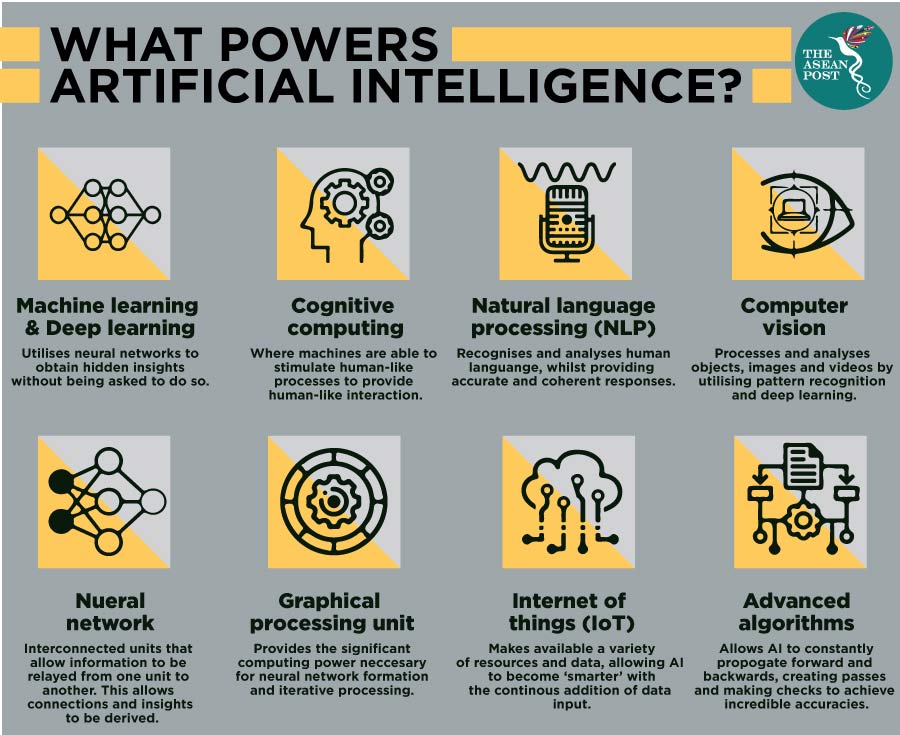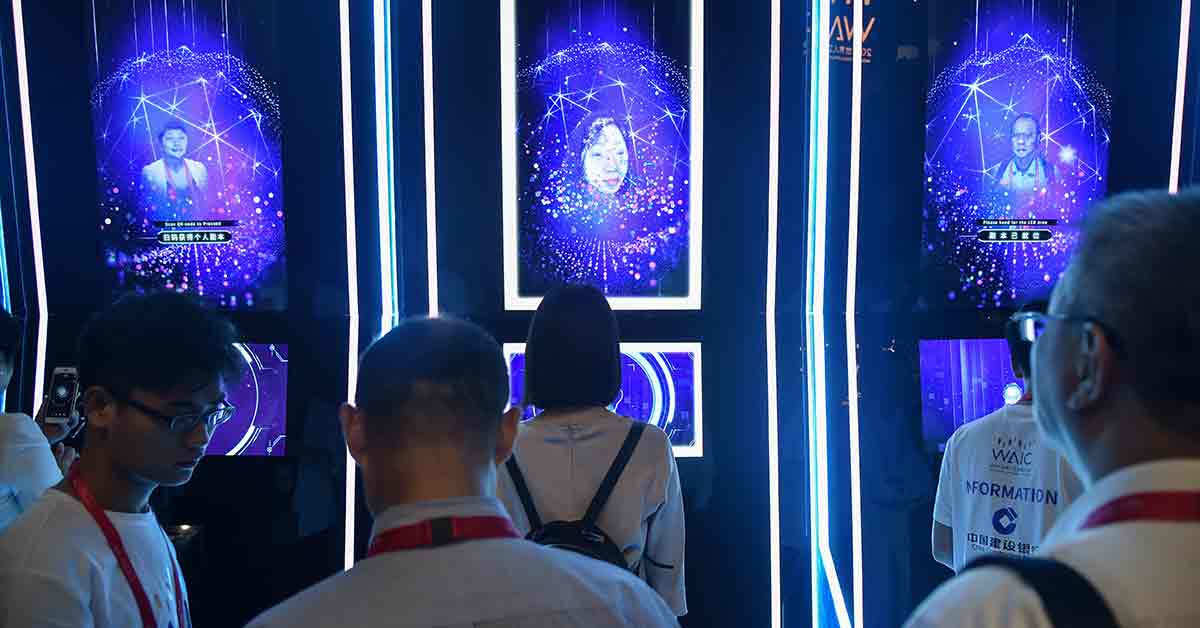As one of the most prevalent and transformative technologies of all time, artificial intelligence (AI) has been incorporated in various major industries since the term was first coined in the 1950s. From providing services such as virtual shopping and online banking to reducing overhead costs in manufacturing and streamlining diagnostics in healthcare, AI has driven most industries forward and has unquestionably changed the lives of many.
Al is understood as the continuous understanding and development of computer systems to perform tasks. The three categories of AI are: Artificial Narrow Intelligence (ANI), Artificial General Intelligence (AGI) and Artificial Super Intelligence (ASI). In ANI, AI is programmed to mimic people’s cognitive abilities, however its abilities are set within a narrow range of parameters. Examples of ANI include Google’s Rank Brain and Apple’s Siri. In these examples, ANIs are able to identify, rank and filter out information in terms of relevancy based on keywords provided.
AGI is created to mimic human behaviour and intelligence to perform labour and cognitive tasks at a pace that is significantly quicker than human beings. Examples include online chess games and machinery in a production line.
On the extreme side of the spectrum, ASI is programmed to surpass a human being’s abilities in terms of task performance and have capabilities that are beyond imagination. In contrast to ANI and AGI, ASI is yet to be developed and remains in the research and experimental stages. In fact, AI that actually surpasses human cognitive abilities remains a myth to this day because no scientists are completely confident of the possibility of ASI.
However, according to a Forbes article, ‘The Future of AI’, AI start-ups that aim to develop ASI have reached a record high in venture capital funding. In 2018, AI start-ups have collectively managed a US$9.3 billion for AI research and development, an increase of 72 percent from 2017’s AI-related funding.
AI start-ups aside, well-established key players in the AI industry include Google, Baidu, IBM, Microsoft, SAP, and Intel among others. The United States (US) currently has the greatest market share, seizing 44.52 percent of the global market, followed by Europe, with 19.43 percent market share.

Government use
AI technologies may potentially spearhead significant changes in the day-to-day management and operational affairs of the government. AI can aid public interactions with the government. For instance, the introduction of virtual assistants and chatbots in outlets and call centres. These allow public queries to be answered efficiently, as well as prevents long queues and waiting time.
AI can also be introduced in a series of government services such as directing complicated queries or requests to appropriate departments, assisting members of the public in filling out forms and scheduling appointments.
In 2016, the Australian government incorporated virtual assistants in its taxation office, national disability scheme and department of human services. AI technologies can be used to allocate resources efficiently - providing administrative support and carrying out repetitive tasks where needed.
With the enormous amount of data stored in a government database, AI is capable of organising and combining numerous datasets to derive insights, information, as well as summarising a variety of data forms.
Facial recognition
Computer vision, a study of AI, has made facial recognition (FR) mechanisms possible by measuring up to 80 nodal points (distances between points on a face). The AI is then able to store the nodal points distances in its database and match the name of the individual to its data. To build the FR mechanism, a neural network is formed in the system by an input of data to generate pattern recognition, and these data consists of face images of millions of people compiled from social networks, websites, surveillance cameras and dating apps.
Due to its high social acceptability and minimal error of 0.8 percent, FR is widely incorporated in Snapchat’s animated lenses, Apple’s Face ID and security identification. FR is unlikely to be limited to these applications as technology companies are working on FR to provide these services to banks, ICOs and e-businesses.
In 2017, FR took the F&B industry by storm when KFC in China allowed customers to pay via FR technology and when frozen pizza brand DiGiorno used FR to capture customers’ expressions when eating the pizza in an effort to plan its future marketing campaigns.
Crowd counting
Using drones, aircrafts and satellites, images and videos of crowds are taken from afar and processed in computer systems. The neural network is formed when a large amount of training data is imported into the system. This allows the system to be able to distinguish stagnant or moving humans or objects based on colour, shape and geometry pixels. The method tracks individuals and prevents double counting, thus achieving incredible accuracy.
During the Hong Kong protest marches in June 2019, approximately 600,000 headcounts were made using AI technology. Instead of using cameras in the air, seven iPads were placed at two stations to record crowd movement and head counts were made when people crossed a benchmark line in the frame of the video. Prior to the protests, a trial crowd counting was run to input data such as density of people, direction of crowd flow, speed of crowd flow and lighting conditions. The data gathered allowed the network system to adapt to the conditions of the built environment.
Previously, infrared beam counters and thermal counters were used to count people by detecting sources of heat in the human body. These technologies have achieved an average accuracy of up to 80 percent. With the current technology of video and Wi-Fi counting, 90 percent accuracy is possible.
Self-driving cars
Another notable leading-edge technology is self-driving vehicles. The use of these vehicles is yet to be widespread as such technology is still in the road-testing stage. These autonomous vehicles are powered by AI deep learning, where sound and image data are fed into the network system. A series of functions such as voice and speech recognition, image recognition and processing and motion detection can be performed, thus allowing these vehicles to be able to recognise all possible traffic situations and perform the right action at the right time.
According to Allianz, the global automated car market will be worth US$43 billion by 2025. Companies that produce chips, sensors, software and laser scanning will be most in need during the next decade. Electric batteries are likely to replace petrol, thus reducing greenhouse gas emissions.
Self-driving cars are believed to be safe and smart, as they will incorporate many automated features. Sensors will help detect obstacles by reflecting pulses of light off the car’s surroundings. Video cameras will be installed to detect traffic lights, read road signs and keep track of other vehicles and pedestrians.
Legal systems
In ASEAN, Malaysia has implemented AI in its legal system. Earlier in March this year, Malaysia’s Chief Justice, Richard Malajum announced the introduction of AI to assist judges in making decisions on punishments for convicted criminals and reducing disparity in similar crime sentences. There is a strong belief that AI will prevent unfairness and will stand by a set of values such as credibility, accountability and transparency. As such, AI is strongly believed to be able to complement the legal services industry.
In addition to ensuring unbiased punishments, AI plays a significant role in the legal profession in Singapore. Legal firms in Singapore have leveraged on technology to assist them in document management, identifying and browsing through relevant case studies, legal analysis and research.
The future
AI technology has yielded great success in various industries, however its peak of development has yet to come. In 2016, AI’s global market was worth US$4 billion. The 2019 Global Industry Analysis & Forecast report states that the AI market is predicted to reach US$169 billion by 2025 and multiply by approximately 100 times to US$15.7 trillion in 2035. The International Data Corporation (IDC) estimates that the retail, banking, healthcare and manufacturing sectors will make up half of all AI-related funds.
Jenn Tan is an intern at 27 Advisory, studying Civil Engineering at Imperial College London. 27 Group is a 100 percent Malaysian owned local consulting firm that is fast, flexible and focused with unique expertise that blends local socio-economic policy settings, global engineering-built assets and detailed financial analyses. Read more about 27 Group’s consulting services at 27.group.
Related articles:
Cloud computing and artificial intelligence could ease Southeast Asia’s traffic woes
